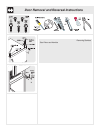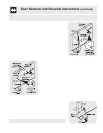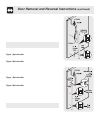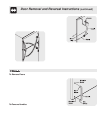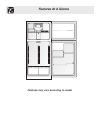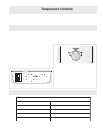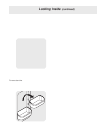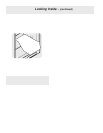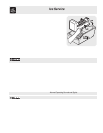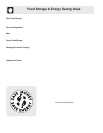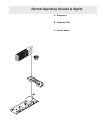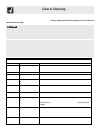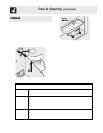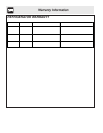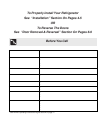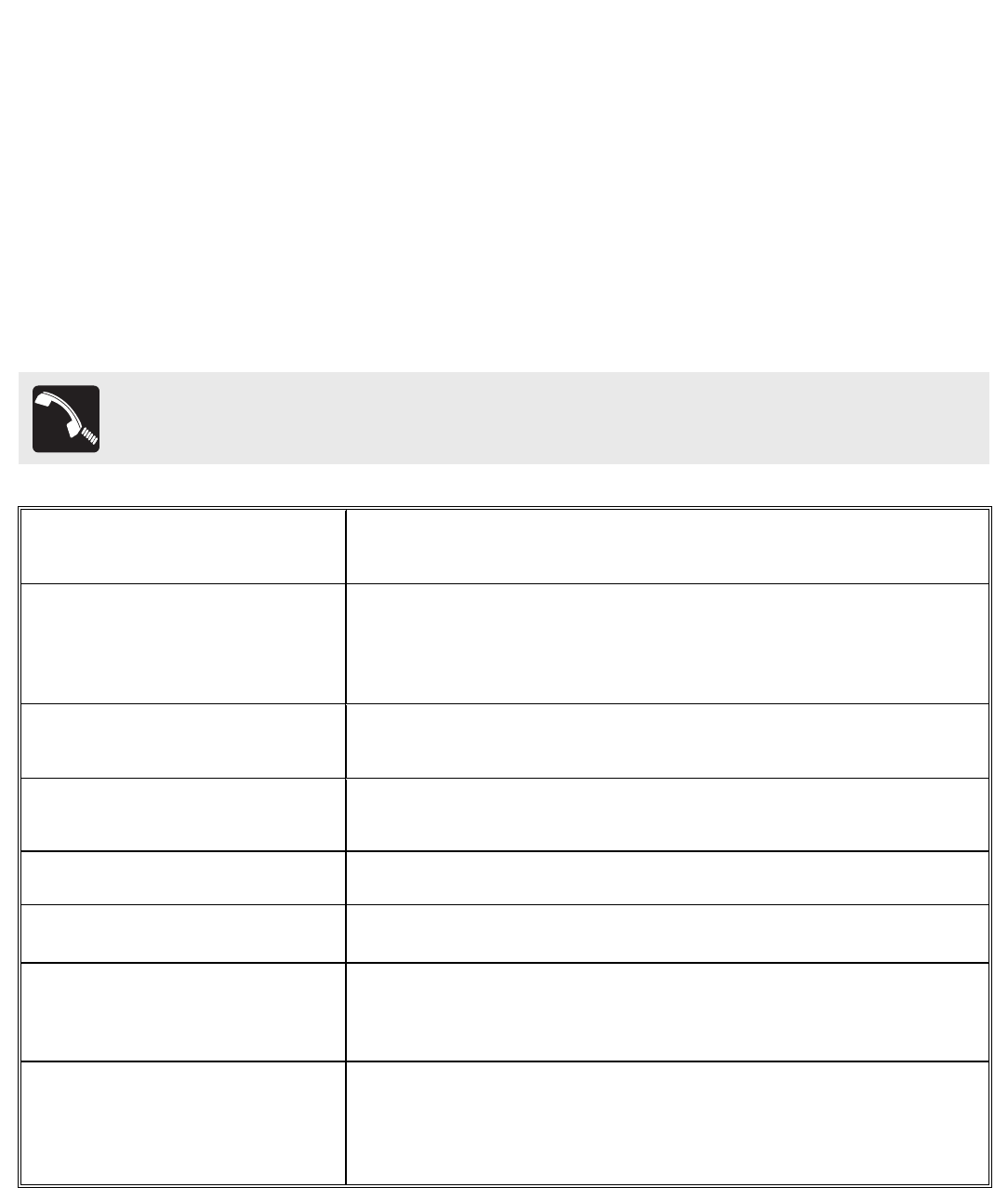
21
Common
Occurrences
Before callin
g
for service, review this list. It ma
y
save
y
ou time and
expense. This list includes common occurrences that are not the result of
defective workmanship or materials in this appliance.
Refrigerator does not run.
•
Ensure plug is tightly pushed into electrical outlet.
•
Check/replace fuse with a 15 amp time-dela
y
fuse. Reset circuit
breaker.
•
The temperature control is turned to
OFF
.
•
Refrigerator may be in defrost cycle. Wait 20 minutes and check again.
Freezer temperature too cold.
Refrigerator temperature is
satisfactory.
•
Set freezer control to a warmer settin
g
until freezer temperature is
satisfactory. Allow 24 hours for the temperature to stabilize.
Refrigerator temperature too cold.
Freezer temperature is
satisfactory.
•
Set refri
g
erator control to a warmer settin
g
. Allow 24 hours for
temperature to stabilize. Then check freezer temperatures and ad
j
ust
as needed.
* Refrigerator is noisy or vibrates.
•
The cabinet is not level.
•
Floor is weak.
Odors in refrigerator.
•
Interior needs to be cleaned.
•
Foods that produce odors should be covered or wrapped.
Cabinet light not working.
•
Replace light bulb.
•
Ensure plug is tightly pushed into electrical outlet.
•
Li
g
ht switch ma
y
be stuck. Push in li
g
ht switch, located on the
refrigerator control box, to release.
Automatic ice maker not working.
(some models)
•
Ensure the Wire Signal Arm is not in UP position.
• Ice maker should produce 4 to 5 pounds of ice in a 24 hour period.
•
Water supply is turned off.
•
Water pressure is too low.
•
The freezer is not cold enough.
Before You Call
ATTENTION
To Properly Install Your Refrigerator
See “Installation” Section On Pages 4-5
OR
To Reverse The Doors
See “Door Removal & Reversal” Section On Pages 6-9
* See Normal Operating Sounds and Sights section on page 17.



